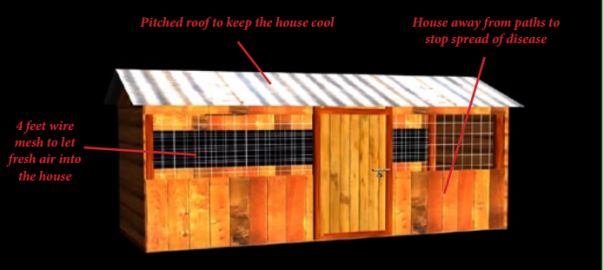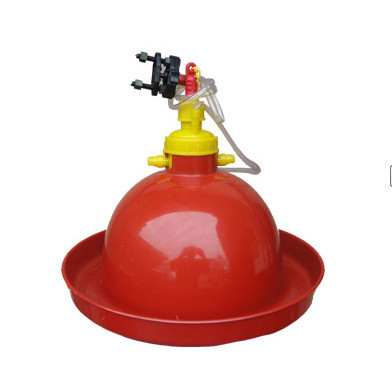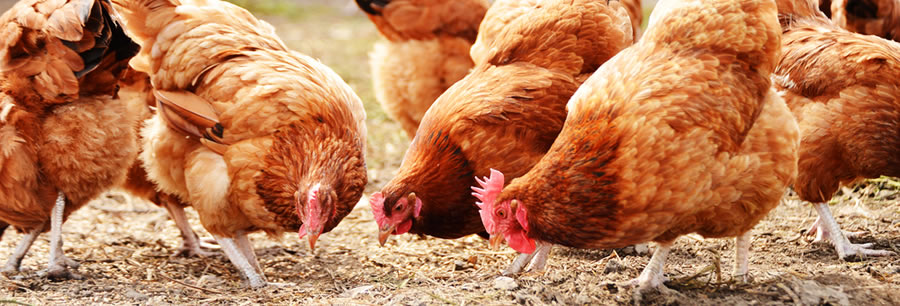Efficiency is very key to success in poultry farming in Kenya
With the right investments and management techniques, chickens can be pushed to dizzying levels of production which ensure maximum profitability for the farmer. As long as the requirements of the birds are met adequately, it is possible to fully maximize on the potential of your chicken breeds whether they are KARI Improved Kienyeji chicken, Rainbow Rooster, Kuroiler, Fast White layers, Kenbro or the Indbro breeds amongst others in Kenya.
Poultry farming is very capital intensive if you are going to do it on a very commercial scale. There is the purchase or the rental of land depending on the options which are available to you; the cost of building the poultry structure, the cost of acquiring the birds; cost of equipment, cost feeds, vaccination and labor costs amongst many others. In order to ensure that the operations are not just and efficient but also profitable, there are certain requirements that you will need to manage when making your poultry investments.
Housing: The most important is undoubtedly the housing part. Most people will simply design a corrugated iron structure with poor insulation and they are ready to get going. It is affordable, right? Unfortunately, poor ventilation is definitely going to impact your production efficiency in several ways. Poultry housing must be constructed in a certain way in order to provide the birds with an optimal environment for production. There are certain types of housing that are conducive for cold climates and certain types of housing which are better suited for hotter climates. This will affect your poultry as follows:-
Hot Climates: In a hotter climate with poor ventilation, there will be higher temperatures inside the chicken run. As a result, feed intake is going to drop and this will be followed by an acute drop in production. The birds will be under great stress and their immune system is going to drop thus exposing them to lots of avoidable diseases. Higher temperatures will also increase the intake of water and this will result in wet manure.

Colder Climates: In colder climates and poor ventilation, feed intake is going to increase and this will in turn lead to poor food conversion ratio or FCR. Based on your location, the flock will also be susceptible to various diseases such as Coryza.
Water: The poultry must be supplied with sufficient clean drinking water. Without that, there will be no life and production will be quite low. Water is one of the most critical factors in maintaining high production levels. If there is a lack or shortage of water, you will see a sharp decline in production, high mortality rates, and the immune system will be lowered thus exposing your flock to various poultry diseases.

Feeds, Quality of Feeds and Feed Wastage:-To maximize on your production levels, the poultry must be fed in very high quality and well formulated feed such as well formulated chick mash, growers mash, layers mash, finishers etc. Poor feeding or even lack of feeding is going to seriously impact the efficiency of your chicken production.

Hygiene, Sanitation, Biosecurity and Disinfection to Get Rid of Germs:- It is important to keep your poultry operation as clean as possible. This is the way to impact your production in a positive direction. If hygiene levels are not kept high, there are various issues that you are going to grapple with including diseases, pests, rodents and flies. Wastage of feed due to poor management of the farm is also going to have a serious impact on your business profitability. Rodents, if not well managed can serious cause serious feed wastage by eating your commercial feeds. They will also destroy your feeding equipment and can transmit certain diseases. Poultry feed accounts for 60-70% of the production costs and feed should, therefore, not be wasted.
Vaccination Program: The Vaccination program must be well-planned and be up to date for all the common deadly diseases. Check out our poultry vaccination schedule which is recommended by KALRO and follow it to the latter. Ensure that this vaccination schedule is strictly adhered to. Make use of high quality vaccines sourced from trusted Agrovets and these must also be administered directly by a qualified veterinary officer. However, even with proper vaccination, there is no guarantee that this will save your flock from diseases such as the Newcastle Disease or NCD but when you vaccinate, you minimize the risks. Proper vaccination will cut down on the production drops and also prevent high mortality rates when there are high incidences of diseases in your poultry. The mortality rate may also depend on the severity of the strain of disease.
Lights and Lighting: Lighting is very essential at night, particularly in commercial egg layers as it will help you in maximizing on production and also reaping the maximum genetic potential of the chickens. Lighting is not just essential, you must also ensure that there is Lux or brightness. Without bright lighting, you will be lowering the efficiency of the production and you will not be able to maximize on the genetic potential of your chickens.
Choice of Breeds: If you are going to run a profitable commercial chicken farming in Kenya, you must ensure that you are choosing viable breeds. There are numerous commercial breeds in Kenya which can be used as layers and broilers. Take time to learn as much information as possible about the breeds of birds that you are planning to keep. If you are planning to go the Kienyeji chicken farming way, you can choose from a great array of improved hybrid poultry breeds such as Rainbow Rooster, Kuroiler, KARI Improved Kienyeji Chicken, Kenbro, IndBro, Fast white layers and many others.
Management and Administration of Poultry Farming: Management and administration is a very important factor in poultry farming success in Kenya. You need a poultry farming management that is passionate, experienced, knowledgeable, dedicated and skilled in order to bring the best out of your flock and manage the farm efficiently and profitably. All the above points cannot be achieved without a competent and passionate management.
Apart from good management, it is important to have good administration. This will be critical to ensuring there is efficient measurements and record keeping so that you can keep track of all poultry farming inputs. Good administration allows you to determine if the poultry products are up to standard: for example, is there optimal egg mass? Is the bird body mass ok? These important measurements will tell you whether you are running an efficient poultry farming operation in Kenya or not.
For example, if you have 6000 layers and are producing 3600 eggs per day, this might seem very good but you are only operating at 60% efficiency. You should be operating at 90% efficiency and producing about 5400 eggs daily if you have 6000 layers. That means you are losing a whopping 1800 eggs per day because you are not efficient! Even your staff cannot steal that much so poor efficiency can be very costly for a poultry farm in Kenya.